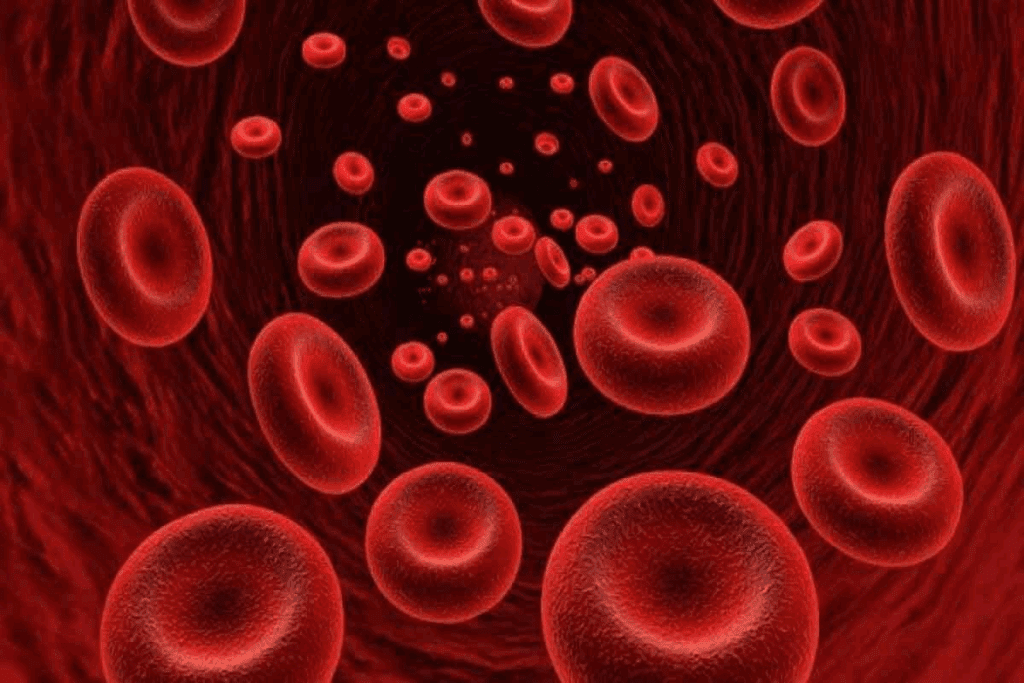Last Updated on November 14, 2025 by Ugurkan Demir
At Liv Hospital, we know how serious anemia can be. It happens when you don’t have enough healthy red blood cells or hemoglobin. This makes it hard for your body’s tissues to get enough oxygen. If not treated, anemia can cause heart failure and even death. Many wonder about anemia cause death, and research shows that severe anemia is linked to increased mortality risk, especially when underlying health conditions are present.

Some people are born with conditions like sickle cell anemia. These can be very dangerous. Also, losing a lot of blood quickly can lead to severe anemia, which is deadly. Clinical experts say that if anemia isn’t treated, death can happen. We will look into the risks, causes, and dangers of anemia. It’s a big health problem worldwide.
Anemia is a big health problem worldwide. It affects a lot of people globally.
About 1.92 billion people have anemia, which is 24.3% of the world’s population. This shows we need to act fast to fight it.
Some groups face more risks from anemia. This includes people with poor nutrition, chronic diseases, and those who can’t get to doctors. Knowing you can die from anemia is important, as these groups are at higher risk of death.

Anemia is not just one disease. It’s a condition with many types, each with its own level of danger. The seriousness of anemia depends on its type and how severe it is — some forms are mild, while others can be life-threatening if left untreated.
Knowing about the different types of anemia and their dangers is key. It helps in managing the condition and avoiding anemia death. The anemic life expectancy can be greatly improved with proper care.
Anemia can be deadly because it harms the heart and reduces oxygen to vital organs. If anemia is severe or untreated, it can cause serious problems. These problems can lead to death.
Anemia can cause cardiovascular complications that lead to death. When there are not enough red blood cells, the heart works harder. This can lead to heart failure.
The heart’s increased workload can cause left ventricular hypertrophy. This thickening of the heart muscle increases the risk of heart failure and arrhythmias. These risks can be fatal if not managed well.

Enough oxygen is key for vital organs to work right. Anemia can cause oxygen deprivation, damaging organs like the kidneys, liver, and brain. This can lead to organ failure, which is dangerous.
Severe oxygen lack can also cause cellular damage and harm organ function. This raises the risk of death. It’s vital to treat anemia quickly to avoid these problems.
In severe and untreated cases, anemia can cause serious life-threatening complications. These include heart problems and organ damage. It also weakens the immune system, making it harder to fight off infections.
Severe anemia can also make it hard for the body to heal from injuries or illnesses. This can be deadly, mainly for the elderly or those with chronic diseases.
Knowing how anemia works shows why it’s so important to catch and treat it early. This can prevent severe problems and lower the risk of death.
Some anemia types are very dangerous and can be deadly if not treated right. We’ll look at these high-risk anemia types. We’ll talk about their risks and complications.
Hemolytic anemia means red blood cells die too early. This can cause serious problems like heart failure and damage to organs, mainly in older people.
The death rates for hemolytic anemia are high, mostly in older adults. Quick diagnosis and treatment are key to avoid serious problems.
Severe iron deficiency anemia happens when the body doesn’t have enough iron for hemoglobin. Without treatment, it can cause heart issues, bad pregnancy outcomes, and other serious health problems.
It’s important to know the risks of severe iron deficiency anemia. We need to spot symptoms early and treat them well. This way, we can avoid fatal outcomes, as the question “can you die from low iron anemia” becomes a reality if ignored.
Aplastic anemia is a rare and dangerous condition where the bone marrow can’t make blood cells. This can cause infections, bleeding, and anemia, raising the risk of death.
Managing aplastic anemia well needs quick diagnosis and treatment. This often includes bone marrow transplants or immunosuppressive therapy.
| Anemia Type | Key Characteristics | Fatal Potentials |
| Hemolytic Anemia | Premature destruction of red blood cells | High, mostly in elderly patients |
| Severe Iron Deficiency Anemia | Lack of enough iron for hemoglobin production | Significant if untreated |
| Aplastic Anemia | Bone marrow failure to produce blood cells | High without quick treatment |
Certain groups are more likely to get anemia and face serious health problems. It’s important to know who these groups are. This way, we can help them more effectively.
Elderly people, and those with health issues like heart disease, are at higher risk. Their health problems make anemia harder to manage. A study by the National Institute of Health found that anemia in the elderly can lead to higher death rates and worse health.
People with long-term illnesses, like kidney disease or cancer, are also at risk. These conditions can cause anemia. It’s important to provide them with full care to improve their chances.
Pregnant women need more iron and nutrients. Anemia during pregnancy can lead to preterm labor and low birth weight. It’s key to have good prenatal care and iron supplements.
People in areas with less access to healthcare face big challenges. They often can’t get the care they need for anemia. Experts say we need to improve healthcare and nutrition education to help these communities.
In summary, we must focus on helping those most at risk from anemia. By understanding their specific needs, we can create better health solutions for them.
It’s important to know the signs of severe anemia. This is true for both patients and doctors. Severe anemia can cause serious problems if not treated quickly. We must watch for these signs to get help fast.
Hemoglobin levels show how severe anemia is. For men, normal levels are 13.8 to 17.2 grams per deciliter (g/dL). For women, it’s 12.1 to 15.1 g/dL. If levels drop below 8 g/dL, the risk of serious problems grows. Levels under 6 g/dL are very critical and need immediate doctor’s care.
| Hemoglobin Level (g/dL) | Severity | Recommended Action |
| 8-12 | Mild to Moderate | Monitor and manage underlying causes |
| 6-8 | Severe | Medical evaluation and possible transfusion |
| Below 6 | Critical | Immediate medical attention and likely transfusion |
Some symptoms mean anemia is very serious. These include:
If you or someone you know has these symptoms, get emergency help right away.
If anemia symptoms get worse or you have emergency symptoms, get emergency care. Waiting too long can be deadly. Quick medical help is key to saving lives.
Can anemia result in death? Yes, severe anemia can be deadly if not treated. Knowing the warning signs and getting medical help is critical.
It’s important to know how anemia can be deadly. If not treated, anemia can be fatal, mainly for those at high risk.
Prevention, early detection, and good treatment are key to lowering anemia deaths. At Liv Hospital, we aim to offer top-notch healthcare and support to patients from around the world.
By tackling anemia’s causes and giving the right care, we can lower the risk of death from this condition. Can low iron cause death? Yes, severe iron deficiency anemia can be deadly if not treated properly.
We stress the need to see a doctor if symptoms don’t get better or get worse. Our team is ready to provide advanced care and advice to patients globally. We make sure they get the help they need to manage anemia well.
Yes, anemia can lead to death if not treated. We will look at how it can cause serious problems like heart issues and damage to organs.
Anemia can lead to heart problems and damage to organs. It’s critical to treat it quickly and effectively.
Hemolytic anemia, severe iron deficiency, and aplastic anemia are riskier. We’ll talk about the dangers of each.
The elderly, those with chronic diseases, pregnant women, and those in poor settings face higher risks. We’ll discuss the need for special care.
Look out for critical hemoglobin levels and emergency symptoms like extreme tiredness and chest pain. We’ll talk about when to get emergency help.
Yes, severe iron deficiency can be deadly if not treated. We’ll stress the need for accurate diagnosis and treatment.
Yes, untreated or severe anemia can be fatal. We’ll highlight the urgency of timely treatment.
Reducing anemia deaths requires prevention, treatment, and management. We’ll emphasize the global health importance of addressing anemia and providing advanced care.
Subscribe to our e-newsletter to stay informed about the latest innovations in the world of health and exclusive offers!